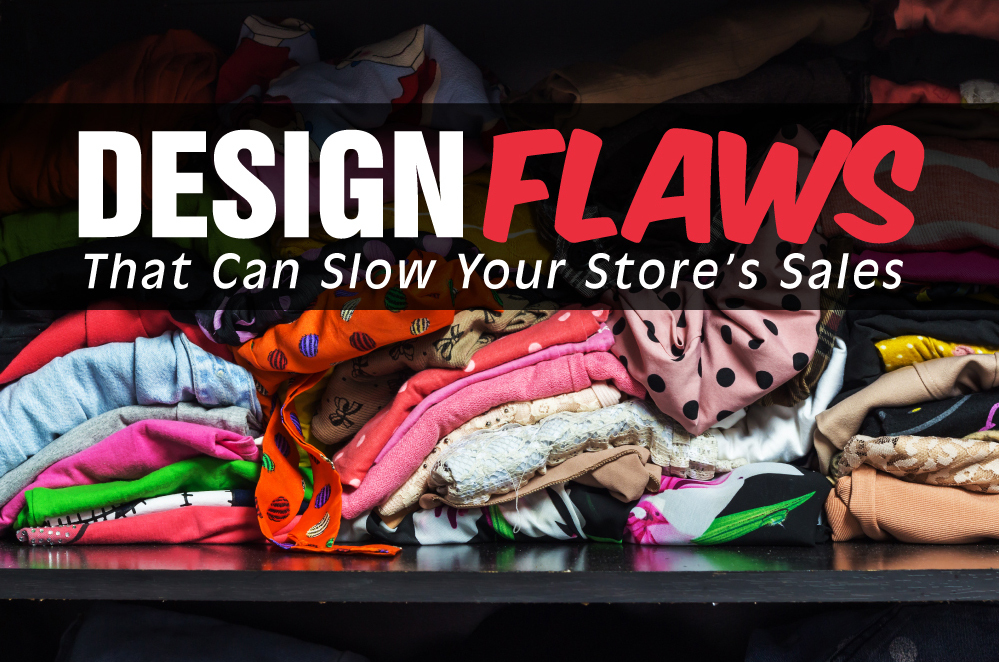Top Design Flaws

Revamping Your Store's Design With These Tips
With all the different possible approaches regarding store design, one thing is certain, there's no right or wrong way to design a store. However, there are some things we can all agree on that can certainly prevent a customer from completing the final step in the buying process - making his or her purchase.
Some design flaws can be costly to fix, but others can be remedied with a little time and attention to what works and what doesn't. Here are a few of the most common design faux pas and how to fix them.
1. Scrimping On the Essential Elements
You've heard the saying, "don't judge a book by its cover," but when it comes to shopping, if a store's necessities aren't up to customers' usual standards, they might just pass it up. Starting and running a store can be a costly venture, but trying to save money on items you need can be a grave mistake.
Lighting needs to be flattering and attractive to the buyers, just as racks should be pleasing to the eye and make your items the main focal point. Likewise, heating and air conditioning should be inspected regularly, since many shoppers won't want to change clothes or browse in an area that's too hot or too cold.
2. A Confusing Check Out Area
A check out area is the last space a customer enters before he or she closes the transaction. "This is a very important space," says Melanie McIntosh, a British Columbia-based consultant in an article on Entrepreneur.com. "You want to have a good impression for the customer when they are leaving, but often it gets very messy because you are taking care of business," McIntosh states.
Because this area is also the last chance for a customer to turn back and not make a purchase, it deserves special attention. A well-designed check out space has a clear indicator of how the line works, signage for returns and customer service requests, and, of course, plenty of space for cashiers to conduct business simultaneously.
3. Disorganized, Cramped Displays
In a well-designed store, customers can easily find what they're looking for and quickly take stock of all of the options available. Quality signage can go a long way when it comes to making a great impact. If your store is relying on signs to help direct customers, they should be big enough to get noticed and readable from a distance. Another important thing to think about is spacing. It's important that aisles are wide enough for multiple shoppers to move around simultaneously and for items to be easily seen and sorted through.
As far as organization goes, it might make sense to group all of the skirts together or organize shirts by color. Yet, if you're repeatedly asked where an item or section is, your layout may not fit with your customers' idea of how the store should be organized. In fact, many stores organize by activity or occasion, such as a casual section or a work wear corner. Take time to develop how you want your customers' shopping experience to flow before you plan your floor design.
4. Not Keeping Up With Daily Wear and Tear
Stacks of hangers, random tags littering the floor, and piles of tried on merchandise aren't the only turn-offs customers find in stores. Dirty carpets, strange odors, burned out light bulbs, chipped mirrors, and scuffed walls can also add to an unflattering shopping ambiance. While accidents like spills, stains, and scuffs do occasionally happen, stay on top of regular chores like cleaning mirrors, sweeping, taking out the trash, and mopping while you're working on making repairs.
One area that seems to get messy fast is the sale or clearance sections. Designed to help a store liquidate items fast, it's of the utmost importance that customers can see these items are priced to sell and are free from flaws that would prevent them from being purchased. Other important sections to keep clear of clutter include, checkout counters, displays at the front of your store, and fitting rooms.
Looking to learn how to create a Welcoming Environment!
